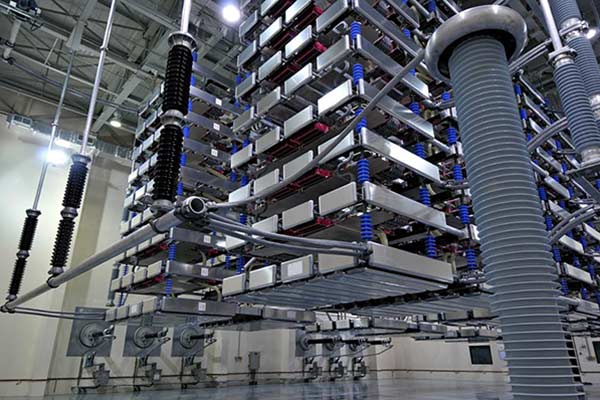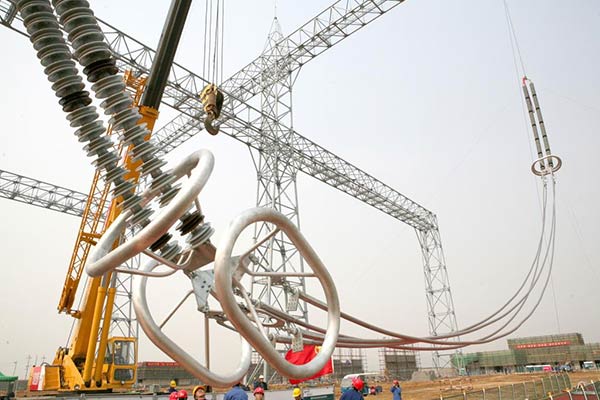The future power grid will develop in the direction of large capacity and long distance, high reliability, and low environmental impact. At the same time, the development of distributed energy, offshore wind power transmission, and the development of island resources will also rely closely on DC cables for power transmission.
Therefore, the research and development of high-voltage DC cables are particularly important and will be of great importance. Follow ZMS cable editorial to analyze the prospects and development of high-voltage DC cables.

High-Voltage DC Cable Uses and Advantages
Compared to AC transmission systems, DC transmission systems have the advantages of large transmission capacity and long transmission distance.
And DC transmission system power regulation is fast and flexible, the risk of chain failures in a wide range is low, and system operation is more reliable.
As an important part of the DC transmission system, HVDC cables are widely used in wind power grid connection, island power supply, and long-distance transmission across the sea.
Data analysis by the ZMS cable team shows that in cable projects with transmission distances greater than 40km, HVDC cables have cost advantages, and the longer the distance the more obvious the advantage.
As one of the key equipment in DC transmission, it is crucial for the stability of the high-voltage transmission network whether the high-voltage DC cable can operate safely.
DC cables are divided into wrapped insulated cables and extruded insulated cables.
Extruded DC cables currently mainly use polyethylene as the insulation medium.
Polyethylene cable internal structure is strong and simple, easy to produce and install, and has always received wide attention.
At present, all indicators of extruded DC cables are better than those of rubber-impregnated solid cables.
The Performance of DC Cables is More Complex Compared to AC Cables.
The insulation layer of AC cable is mainly subjected to frequency AC voltage, and its electric field distribution is inversely proportional to the dielectric coefficient distribution. In general, the dielectric constant of the insulation material can be considered almost independent of the temperature, so the electric field distribution and temperature distribution in the cable insulation layer are almost independent.
In contrast, the insulation layer of DC cables is mainly subjected to DC voltage, and its electric field distribution is proportionally distributed to the volume resistivity. Since the resistivity of the polymer insulation material is very sensitive to temperature changes, in general, the resistivity decreases exponentially with the increase of temperature.
Therefore, in the normal operation of the extruded DC cable will appear electric field reversal phenomenon, that is, the electric field strength of the largest places appears at the outer surface of the insulation layer.
Secondly, AC cables do not have the problem of space charge accumulation during operation because the voltage polarity at both ends of the insulation layer is constantly changing.
DC cables, on the other hand, may accumulate space charge during operation because the voltage polarity remains constant.
The accumulation of space charge is closely related to the occurrence of faults in DC cables.
The accumulation of space charge in the cable insulation layer can distort the local electric field in the medium, which in turn causes partial discharge and dielectric breakdown.
In particular, the accumulation of space charge under the action of a strong electric field will accelerate the aging process of polymer dielectric.
High voltage DC cable development status comparison
Internationally, Europe and Japan have many years of operating experience in extruded DC cables.
Europe is a leader in the manufacture, installation, and development of DC cables.
There are world-renowned cable manufacturers ABB of Switzerland, Nexans of France, and Prysmian of Italy, as well as cable material suppliers Nordic Chemicals.
Japan has also invested a lot of effort in the research and development of DC cables and has achieved good results.
Japanese scholars have achieved good results by adding nanoparticles to conventional AC cables to improve their space charge properties.
China has also carried out a lot of work in the R&D, production, construction, and operation level of DC cables.
However, there is still a big gap compared with the world’s advanced level, and most of the power cables in practical engineering applications rely on imports, and the domestic production of products also basically uses imported cable materials.
The main future research content of high-voltage DC cables
The main properties of DC cable insulation materials include electrical conductivity, thermal conductivity, mechanical, and space charge properties, and environmental friendliness.
How to regulate the various properties of cable insulation materials is a long-standing problem that scholars at home and abroad are committed to solving.
The development of extruded DC cables needs to address two key scientific issues: the generation, transport, accumulation, and dissipation of space charge in the medium under the action of multi-field coupling and the synergistic regulation of multiple properties of the insulating medium.

The main future research contents include
1 Process Aspect
The change law of space charge generation, transport, accumulation, and dissipation in the solid insulating medium under the action of multi-field coupling in steady state and transient process and its interaction process with conductivity.
The relaxation characteristics of space charge during polarity reversal, as well as the influence laws of nano-inorganic particles and nanofibers on space charge injection and suppression and the characteristics of the influence on insulation aging characteristics.
2 Methodological Aspects
The mechanism of regulation of space charge, internal electric field, and thermal field distribution by nanocomposites and the regulation method.
Study the interfacial structure of nanoparticles designed to change the physicochemical environment of nanoparticles.
Such as the chemical functional groups on the particle surface, nanoparticles, and polymer matrix to change the interaction, the modulation effect of the physicochemical environment of nanoparticles on the internal electric field distribution, and the thermal field distribution of composite insulating media.
The law of the influence of the nano-dimensional array structure on the electric and thermal fields of the dielectric in solid insulating media, and the physicochemical laws and methods for the coordinated regulation of multiple properties.
3 Parametric Aspects
The generation, development, and evolution of defects in the insulation system inside DC cables, as well as the characterization parameters of insulation aging and defect states.
The effect of nano-doping on the long-term operating characteristics of extruded DC cables is obtained through the study.
4 Establishing a Complete System
To establish a green and environmentally friendly matrix material system for high-voltage DC cable insulation.
The addition of inorganic nanoparticles is used to achieve synergistic and optimal regulation of the electric and thermal fields of the new insulating matrix materials under high-voltage DC.
Solve the basic problem of producing extruded super and extra high voltage DC plastic cables.
The above is a rough analysis of the prospects for high-voltage DC cables. As social development accelerates, global electricity consumption will only increase and not decrease. ZMS cable company has always been concerned about the development of the cable, always adheres to providing high-quality cable, good value for money, thoughtful service, the product after a strict manual qualification audit, trustworthy.
—ZMS Cable Group
